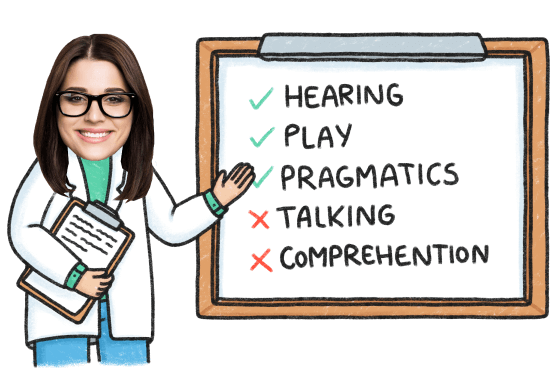Terrible Twos - Are They Really that Terrible?
Feb 8, 2022 One day while doing my weekly grocery shopping my two-year-old had a meltdown. He began wailing, screaming, and throwing his head back in the shopping cart. I could feel the eyes of strangers staring at me with an ugh look. Some wondered what the problem was and some rolled their eyes. I was in the middle of the biggest 2-year-old toddler tantrum my son ever threw.
Desperately I tried talking to him. Showing him things and he just pushed everything away. My face started to get flushed as I tried to find an empty aisle near the clothing section to drown him out. But there was no escape and I was about the tear up myself. How do I stop my 2-year-old from his meltdown in the middle of this store? I was all out of ideas.
In This Article
What are Terrible Twos?
I was in the defined stage of childhood called terrible twos.
It’s the phase that many moms talk about and will look at each other with the “I remember those days”.
At around 2 years old your toddler will start to seek more independence. They are forming opinions and dislikes. They are in a huge developmental milestone. And this is the time where they can get frustrated if their wants/needs are not understood. Due to a lack of language skills, fine motor skills, and tolerance for waiting.
It can be a hard phase for parents but I promise you aren’t alone.
Some of the things you will notice will be crying out of nowhere. Fighting you on things they never use to fight you on and wanting to do things on their terms. Sometimes it could also mean transition times take longer. For example when play-time or when an activity is over.
How Long Do the Terrible Twos Last?
There is no defined start and stop point of the terrible twos stage. It starts around the beginning of 2’s and can last into early 3’s.
In my experience, each of my kiddos has been different. My son started early 2’s where my daughters were more around the end of 2’a and into their 3’s. And my daughter’s terrible two came with sassy attitudes.
The more important time frame to me was how long where these outbursts gonna last. How to make them less frequent and how I dealt with them.
How to Deal with Terrible Twos

When you enter the terrible twos you will start to see maybe more days where your kid is more opinionated. It could be with their clothes, food, and playtime stuff.
First off understand that your child’s defiant time will be in short bursts. Tantrums can be between 5-20 mins. These bursts can come at not-so-perfect moments during your daily life. But there are differences between tantrums and meltdowns.
When these moments hit try your best not to yell at your child or punish them. Try to understand their frustration first. And take a deep breath. I repeat take a deep breath. You want to try to remain calm.
Kids are too young to navigate their emotions and frustrations. So as parents we have to allow them to work through their feelings.
Easier said than done. I mean I know what you are thinking. “Work through his feelings?” I was in the middle of the grocery store trying to shop when my son was falling apart.
But think about this example. There are times even as adults where we are trying to find the right words. And we get frustrated that we are struggling too.
Ask your child questions to see if you can calm them down by being understood.
Offer comforting toys or things they may be interested in. But if the tantrum is related to let’s say candy or a toy you don’t want your child to have. Stick to your guns.
Don’t regretfully give them the item. Your rule is your rule. If you cave and give in you might encourage a pattern. The pattern would be if I cry and scream when I don’t get what I want then this is what I need to do.
If you are out in public like I was quickly try to relocate yourself so you can offer comfort and discourage yourself from getting frustrated. Your frustration will only add fuel to the fire. And that’s not the goal.
Recommended article
How Do I Stop My 2-year-old from Melting Down?

There are a few techniques I have learned over my 19 years of motherhood.
First off, stick to routines: Young children especially need their sleep. Establish a bedtime and keep nap schedules the same. It’s possible that a tantrum could be a result of tiredness or hunger. Kids thrive on routines and as parents, you benefit more from routines. When kids know what to expect they are less likely to feel uneasy. Routines mean you can plan ahead, do things when the kids nap.
Never travel without snacks: I mean this is easy trick kids love snacks and they can be lifesavers. Kids are like bottomless pits. Snacks are a great way to distract kids while shopping and running errands.
Do things earlier: Kids are the most energetic in the morning and are better in general in the morning. Our family dentist even told me that they purposely schedule all children under the age of 5 before noon. She said that the children were the most cooperative and that it avoided the nap crash.
Bring along toys or manipulative toys children can engage with while out and about. It can serve as a distraction if you are needing to wait longer than usual for something. Don’t be afraid to pull out the phone and tablet if you have too. Just be wise on the length of time and content.
I like to use learning apps like Speech Blubs instead of always watching movies or shows.
Boost Your Child’s Speech Development!
Improve language & communication skills with fun learning!

Tantrums vs. Defiance and Behavioral Concerns

My oldest would fight me more than my younger two during this age but a clear sign was when it became frequent and her behavior spilled into multiple times a day. She would often be more defiant more than just throwing a tantrum.
I didn’t know the difference when she was a single child. But then her teachers started to notice some of her behavioral issues becoming more of concern at school.
It was later discovered my daughter had ADD, ODD, anxiety and depression.
If you start to have concerns about your child be sure to seek help and talk to your doctor about it.
Things to look for:
- More frequent and long-lasting tantrums
- Aggressive behavior
- Withdrawn
- Self-harm
- Biting, hitting others
- Shouting back and anger
Seek the help of your pediatrician and then if need be see other professionals like counselors, therapist and psychologist. Being ahead of the issues when you first see them will only aid in the long run.
Lastly allow your child to process and yourself. Tantrums can come unexpectedly. Help your child work through the frustration.
All parents go through this stage. And it’s important to understand you aren’t dealing with a result of poor parenting. Tantrums are normal.

